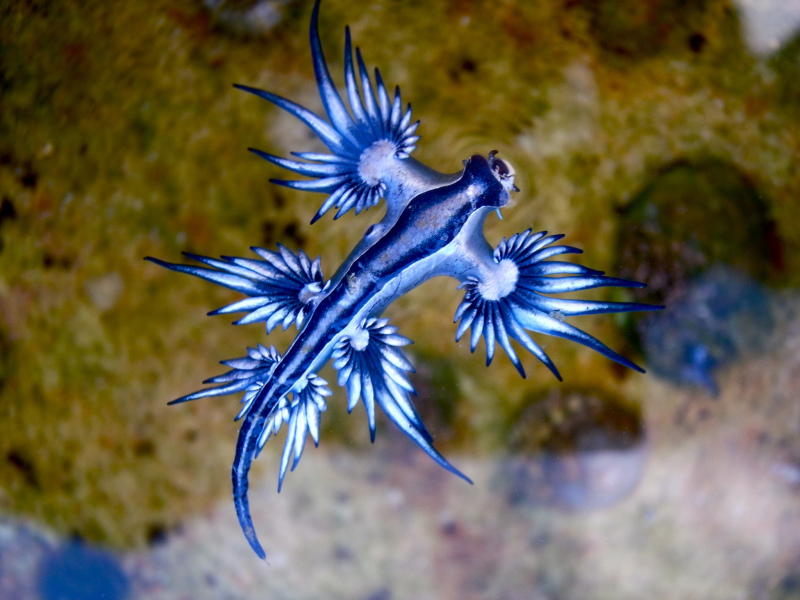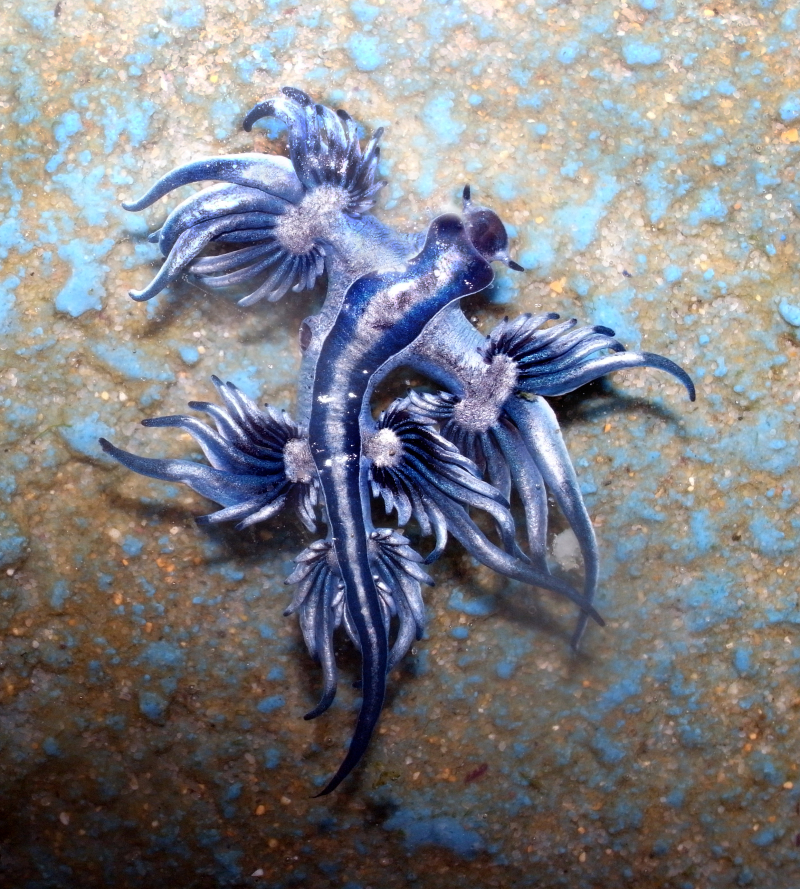Colours
Distinguishing features
It is a pelagic nudibranch.
It is silvery grey on its dorsal side and dark and pale blue ventrally. It has dark blue stripes on its head. It has a tapering body which is flattened, and has six appendages which branch out into rayed, finger-like cerata.
With the aid of a gas-filled sac in its stomach, it floats at the surface. Due to the location of the gas sac, it floats upside down. The upper surface, actually the foot (the underside in other snails), has either a blue or blue-white coloration. The true dorsal surface (downwards in G. atlanticus) is completely silver-grey. (Wikipedia)
Size
- Up to 4 cm (Length of specimen)
Synonyms
Distribution
Distribution and habitat preferences
Regions where this slug is found include the East and South Coast of South Africa, European waters, the east coast of Australia and Mozambique.
This nudibranch is pelagic, and occurs throughout the world's oceans, in temperate and tropical waters. This species floats upside down on the surface tension of the ocean. (Wikipedia)
Diet
They feed on other pelagic creatures including The Bluebottle Jellyfish.
Web resources
Danger
- significant discomfort - Because they store stinging nematocysts from the jellyfish that they eat within its own tissues, a human picking up the sea slug may receive a painful sting. (Wikipedia)


